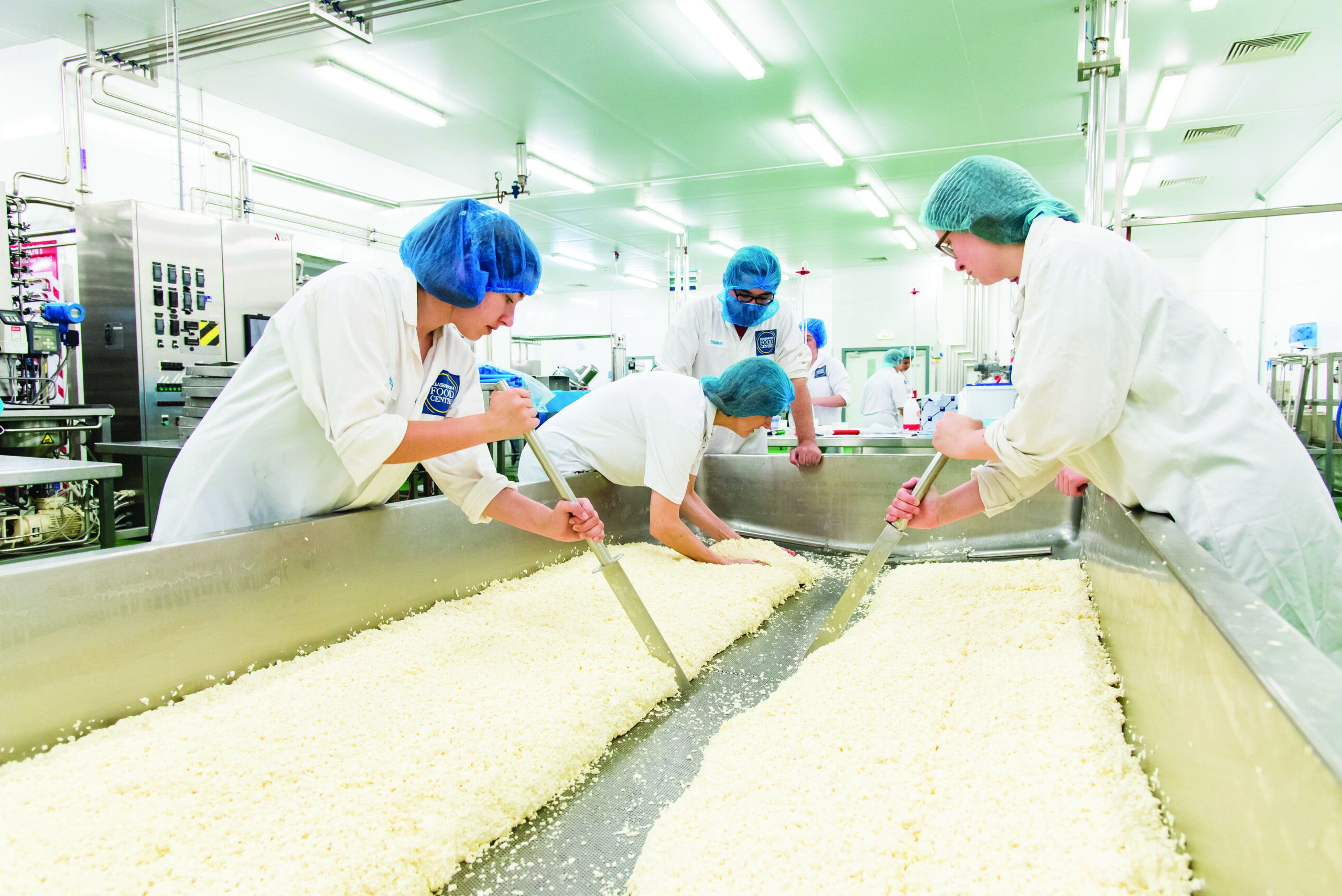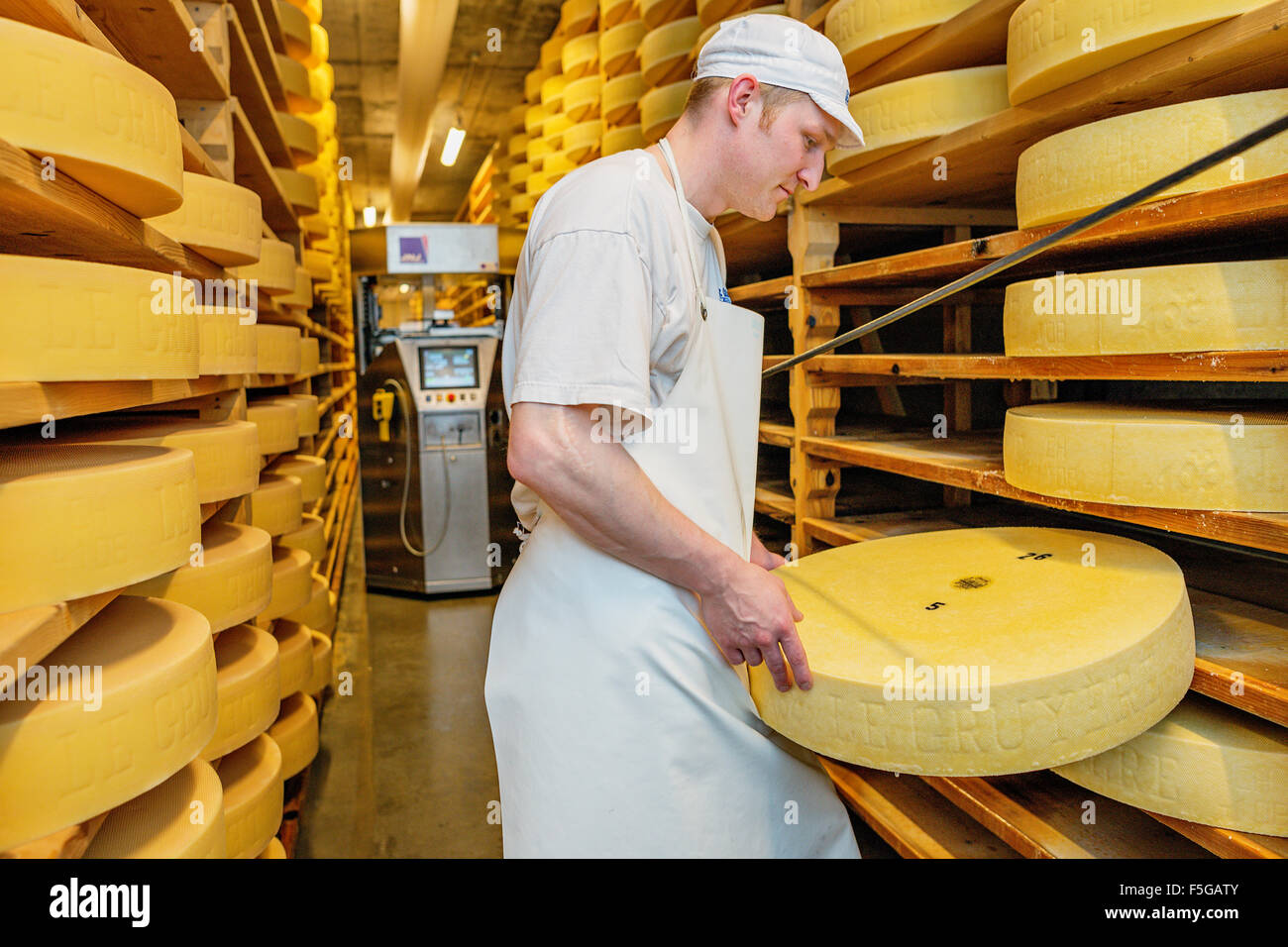Comprehending the Scientific Research Behind Cheese Manufacturing: From Milk Choice to End Product
The detailed process of cheese production starts with the careful choice of milk, a selection that profoundly affects the end product's flavor and structure. Recognizing the crucial role of germs in fermentation discloses just how these microorganisms transform lactose right into lactic acid, a vital ingredient in establishing the cheese's personality. Following this, the coagulation procedure transforms fluid milk into curds, setting the phase for aging, where real intricacy of tastes emerges. Quality control remains necessary at every phase, yet the nuances of these procedures might still hold shocks that warrant more expedition.
Milk Choice Process
The selection of milk is a crucial step in the cheese production procedure, as it straight influences the flavor, texture, and top quality of the last product. Various variables need to be taken into consideration throughout this selection, including the resource of the milk, the breed of the animals, and their diet regimen. Cow's milk, goat's milk, and lamb's milk each possess distinctive buildings that add to the distinct qualities of various cheese ranges.

In addition, the dietary content of the milk, influenced by the animal's diet plan, can change celebrity's last features. Top notch milk, sourced from healthy and balanced animals, ensures a remarkable cheese item, emphasizing the significance of rigid top quality control measures in the milk selection process. Therefore, mindful consideration in milk selection is crucial for successful cheese production.

Role of Microorganisms in Fermentation
Adhering to the cautious selection of milk, the fermentation procedure plays a critical role in cheese production, where germs are presented to change the milk into cheese. The main function of these microorganisms is to transform lactose, the sugar existing in milk, into lactic acid. This acidification not just changes the pH of the milk however also plays a critical function in flavor development, texture, and conservation of the end product.
Lactic acid bacteria (LABORATORY), such as Lactococcus and Streptococcus types, are typically used in cheese production due to their capability to thrive in milk and their payment to the fermentation process. The metabolic activities of these germs cause the production of numerous metabolites, including taste compounds and antimicrobial materials, which hinder wasting organisms and pathogenic microorganisms, thus boosting cheese safety.
In addition, the fermentation procedure influences the total characteristics of celebrity, including its fragrance, taste, and appearance. Different stress of bacteria can present distinct tastes and add to the one-of-a-kind profiles of different cheese kinds. Thus, the selection of microbial cultures is an important Check Out Your URL action in achieving the desired cheese high quality and uniformity.
Coagulation and Curd Formation
In the cheese production procedure, coagulation marks a crucial transition from fluid milk to solid curds. This process is usually matched by the acidic environment developed by lactic acid germs, which even more aids in coagulation by reducing the pH of the milk.
The resulting curds are formed as the fluid whey begins to separate. Aspects such as temperature, the amount of rennet utilized, and the moment enabled coagulation are important in determining the appearance and high quality of the curds. Greater temperatures and longer coagulation times normally yield stronger curds, suitable for tougher cheeses.
When address curds are created, they are cut right into smaller sized items, permitting whey to leave extra efficiently. This action is essential, as it affects the dampness content and general features of the final cheese product. Correct management of coagulation and curd formation is crucial for attaining specific cheese styles and preferred taste profiles.
Aging and Flavor Growth
After the curd has actually been formed and whey has been drained pipes, the following stage in cheese manufacturing is aging, likewise recognized as growth. This essential process dramatically affects celebrity's final flavor, texture, and scent. During aging, different biochemical and microbiological makeovers take place, impacting the overall sensory profile.
The aging environment, including temperature and humidity, plays an important function in flavor advancement. Enzymes and germs existing in celebrity promote the breakdown of proteins and fats into smaller molecules, leading to the formation of amino acids, fatty acids, and volatile compounds. These transformations add to the complexity of flavor and aroma, with distinct accounts arising based on the specific cheese variety.
In addition, the period of aging is crucial; much shorter aging periods normally produce milder flavors, while longer maturation cause even more durable and nuanced profiles. Factors such as the milk resource, cheese kind, and certain aging strategies additionally improve the diversity of tastes generated. Eventually, aging is a delicate balance of time, ecological problems, and microbial activity, culminating in the one-of-a-kind attributes that define each cheese selection.
Quality Assurance in Cheese Production
Guaranteeing high requirements throughout celebrity production procedure is crucial for supplying a top quality product that meets customer expectations - cheese for sale online. Quality assurance (QC) encompasses numerous stages, beginning from raw milk choice to the final aging procedure. Each stage needs meticulous focus to detail to protect against contamination and make sure click now consistency
During milk option, producers have to examine factors such as fat material, pH degrees, and microbial high quality. Normal testing for somatic cell matters and bacterial tons is essential to make sure the milk's suitability for cheese making. In the manufacturing phase, QC procedures consist of keeping an eye on the temperature level, acidity, and rennet task, which significantly affect texture and taste.
As cheese matures, constant sensory assessments and research laboratory analyses are carried out to analyze flavor growth, texture, and general quality. Any variances from developed standards require rehabilitative actions to preserve product honesty.
Furthermore, paperwork and traceability are important elements of reliable quality assurance, allowing producers to track celebrity from ranch to customer. By applying robust QC protocols, cheese producers can not just boost product quality but likewise construct customer trust, ensuring their location in an affordable market.
.jpg)
Verdict
To conclude, the scientific research of cheese production incorporates a number of critical points, each substantially influencing the end product. The mindful choice of milk, the important role of bacteria in fermentation, the transformation of fluid milk into curds via coagulation, and the aging process jointly add to the development of unique tastes and textures. Rigid quality control determines ensure that each cheese variety meets well-known standards, consequently boosting consumer complete satisfaction and keeping the stability of the cheese-making custom.